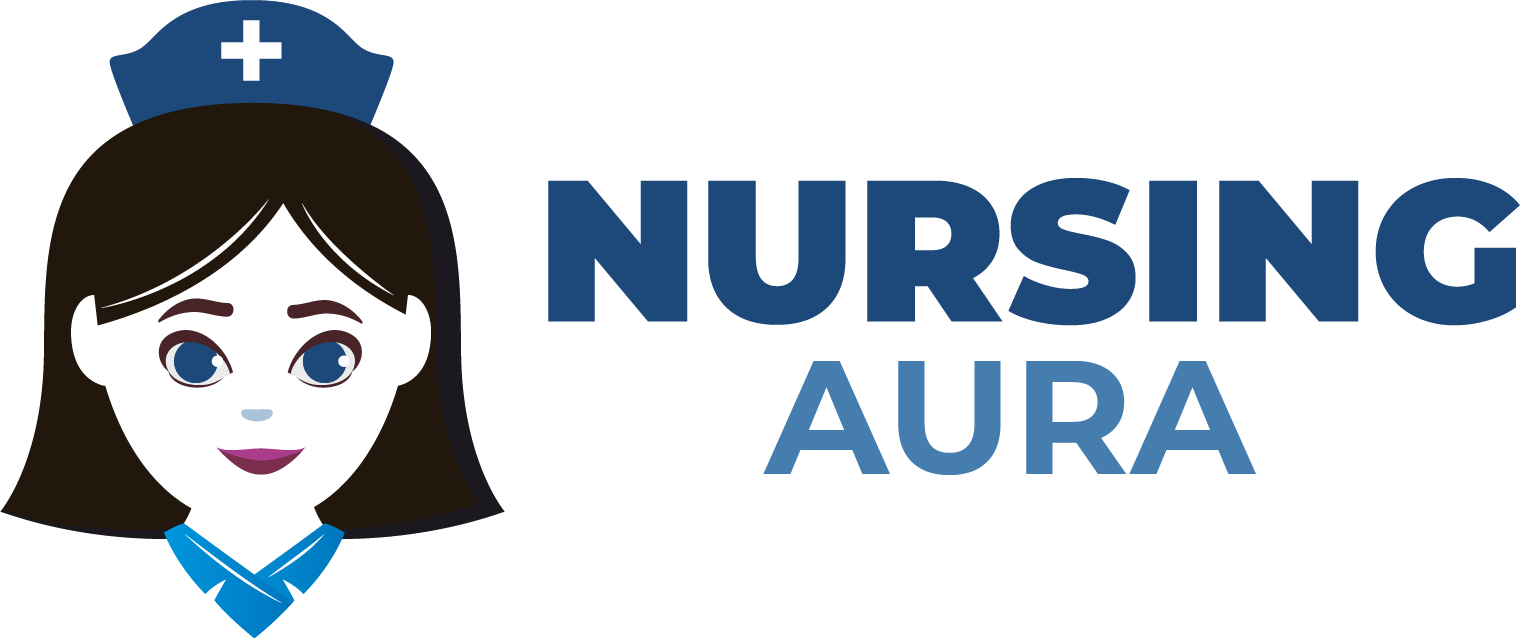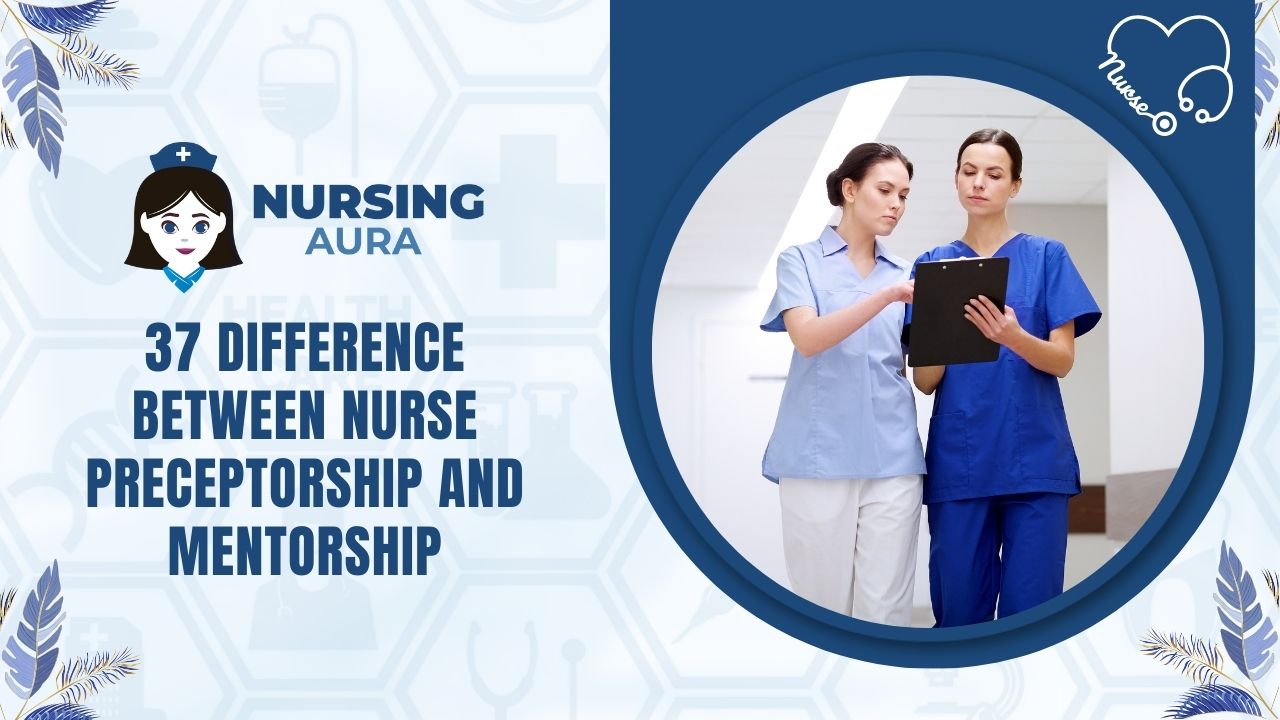Both have experienced nurses mentoring less experienced ones, but their focus, organization, and outcomes differ. A short-term, organized training program for freshly licensed nurses or nursing students is preceptorship in clinical settings. Veteran preceptors help novices move from academia to clinical practice. Hands-on teaching, skill demonstration, and instant feedback. Primarily, the rookie nurse must learn clinical competence including patient care, safety, and documentation. Preceptorship has a set curriculum and timeframe, usually a few weeks to many months.
Mentors, frequently experienced nurses or nurse leaders, advise and assist their mentees, who are often at different phases of their nursing careers. The focus is on clinical skills and personal/professional improvement. Mentorship involves open-ended discussions, goal-setting, and career reflection. Mentorship lasts months or years, unlike preceptorship.
The relationship type is another crucial factor. Preceptorship is task-oriented and focuses on clinical skills. Mentorship promotes career growth and relationship-building. Mentors can help mentees navigate the complex world of nursing beyond the clinic by sharing their experiences and ideas. The consequences of preceptorship and mentoring differ. Preceptorships train clinical nurses to deliver safe and effective patient care. Structured and outcome-driven, it stresses skills and capabilities. Leadership, career progress, and professional development are promoted by mentoring. Job happiness, professional fulfillment, and personal progress are outcomes.
Finally, nurse preceptorship and mentorship both help nurses improve professionally, but they serve distinct purposes. Short-term, task-oriented preceptorship focuses on clinical skill development, whereas long-term, relationship-driven mentoring seeks professional and personal improvement. To meet the needs and aspirations of students and colleagues, nurses and nursing educators must understand the distinctions between these two notions.
|
S.No. |
Aspects |
Nurse Preceptorship |
Mentorship |
|
1. |
Definition |
A process where an experienced nurse guides a novice |
A relationship where a senior professional advises a |
|
nurse in a clinical setting |
less experienced individual in career development |
||
|
2. |
Purpose |
Orienting new nurses to the clinical setting |
Developing overall professional growth and development |
|
3. |
Time Frame |
Typically short-term (a few weeks to months) |
Can be short-term or long-term |
|
4. |
Focus |
Practical clinical skills and routines |
Holistic professional development and guidance |
|
5. |
Hierarchical Structure |
Clear hierarchical structure where the preceptor is |
More egalitarian, with the mentor and mentee having |
|
responsible for direct guidance and evaluation |
relatively equal standing |
||
|
6. |
Task Orientation |
Emphasis on skill development and hands-on training |
Focus on career advancement, goal setting, and skill |
|
for specific tasks and procedures |
refinement |
||
|
7. |
Context |
Mostly within the confines of a clinical setting |
Extends beyond the clinical setting into various career |
|
development aspects |
|||
|
8. |
Evaluation |
Often involves formal evaluations based on specific |
Evaluation might be more informal and may focus on |
|
clinical criteria |
overall professional growth and development |
||
|
9. |
Scope |
Narrow focus on immediate clinical needs and challenges |
Broader scope that may include personal and professional |
|
development |
|||
|
10. |
Duration |
Involves a structured program with a fixed duration |
May continue for an extended period depending on the |
|
needs and goals of the mentee |
|||
|
11. |
Required Experience |
Usually requires substantial clinical experience |
Can be effective with various levels of professional |
|
and expertise |
experience |
||
|
12. |
Support Provided |
Offers direct, hands-on support in clinical situations |
Offers guidance, advice, and support in various |
|
and tasks |
professional scenarios |
||
|
13. |
Emphasis |
Focus on skill acquisition and immediate competence |
Emphasis on personal and professional growth and |
|
development |
development |
||
|
14. |
Outcome Measurement |
Success is often measured by the proficiency of the |
Success is measured by overall career growth and |
|
nurse in performing specific clinical tasks |
professional accomplishments |
||
|
15. |
Structure |
Structured program with defined goals and objectives |
Less structured, with goals tailored to the individual’s |
|
needs and aspirations |
|||
|
16. |
Support in Decision |
Focuses on immediate decision-making in clinical |
Offers guidance in various career-related decisions, |
|
Making |
settings |
including long-term career planning |
|
|
17. |
Hierarchy In Decision |
Preceptor often holds the final authority in clinical |
Mentee retains more autonomy in decision-making, |
|
Making |
decision-making processes |
guided by the mentor’s advice |
|
|
18. |
Training Focus |
More technical training and practical clinical skills |
Focus on both technical and soft skills, leadership, |
|
and career advancement |
|||
|
19. |
Goal Setting |
Often immediate and short-term focused |
Focuses on both short-term and long-term goals, with |
|
an emphasis on career development |
|||
|
20. |
Program Structure |
Typically follows a standardized program structure |
Structure varies depending on the needs and goals of |
|
the mentor-mentee relationship |
|||
|
21. |
Accountability |
Preceptor is accountable for the immediate progress |
Shared accountability, with the mentee taking more |
|
and development of the nurse |
ownership of their professional growth |
||
|
22. |
Personal Connection |
Often focuses on a professional relationship, with |
Involves building a strong personal connection in |
|
limited personal involvement |
addition to a professional connection |
||
|
23. |
Learning Environment |
Focused primarily on the clinical environment |
Includes a broader learning environment, incorporating |
|
networking and exposure to various professional |
|||
|
opportunities |
|||
|
24. |
Formality |
Tends to be more formal in structure and interaction |
Can be formal or informal, depending on the preferences |
|
of the individuals involved |
|||
|
25. |
Expertise Utilization |
Utilizes the expertise of the preceptor in immediate |
Draws upon the mentor’s expertise for broader career |
|
clinical situations |
guidance and development |
||
|
26. |
Setting Boundaries |
Often involves setting boundaries for specific clinical |
Boundaries can be more flexible, allowing for a broader |
|
responsibilities and tasks |
range of professional discussions and support |
||
|
27. |
Role Clarity |
Clearly defined roles for the preceptor and the nurse |
Roles may overlap, allowing the mentor and mentee to |
|
under preceptorship |
engage in various professional aspects |
||
|
28. |
Development Monitoring |
Primarily focuses on clinical skill development and |
Focuses on overall career growth, including skill |
|
competency achievement |
development and progression |
||
|
29. |
Support in Challenges |
Primarily focused on immediate clinical challenges |
Offers guidance and support in various professional |
|
and personal challenges |
|||
|
30. |
Formal Assessment |
Involves more formal and structured assessment of |
May involve informal assessments, with the focus on |
|
clinical skills and competencies |
overall career progression |
||
|
31. |
Leadership Skills Focus |
Limited emphasis on leadership skills development |
Focuses on developing leadership qualities and skills |
|
32. |
Transition Assistance |
Focuses on smooth transition into a clinical setting |
Aids in career transitions and changes, offering support |
|
and familiarization with the environment |
and guidance through various professional shifts |
||
|
33. |
Specificity of Advice |
Offers specific advice tailored to clinical situations |
Provides broader advice tailored to professional growth |
|
34. |
Emotional Support |
Offers limited emotional support in the clinical |
Provides emotional support in various professional |
|
setting |
and personal situations |
||
|
35. |
Monitoring Progress |
Primarily monitors clinical progress and competency |
Monitors overall professional progress, including |
|
attainment |
skill development and career advancement |
||
|
36. |
Communication Focus |
Focuses on clear communication related to clinical |
Emphasizes effective communication for professional |
|
tasks and responsibilities |
growth and development |
||
|
37. |
Program Formality |
Generally follows a more structured and regulated |
Can be flexible and adaptable depending on the |
|
program format |
dynamics of the mentor-mentee relationship |
Frequently Asked Questions (FAQs)
Q1. What's the aim and duration of nursing preceptorship?
Preceptorship teaches novice nurses clinical skills and knowledge, unique to their setting. Depending on the clinical situation and nurse growth, orientation lasts weeks to months. New nurses must perform clinical activities safely and competently.
Q2. What distinguishes nursing mentorship from preceptorship and how long?
Nurse mentorship differs from preceptorship. A mentorship relationship lasts beyond orientation. The focus is on job advancement, personal growth, and healthcare guidance. Unlike preceptorship, mentorship may aid nurses throughout their careers.
Q3. What is the preceptor-new nurse relationship like?
Hierarchical and task-oriented preceptor-new nurse interaction. The preceptor guides and assesses. Initial clinical competency, integrating theory and practice, and ensuring rookie nurses can perform clinical duties effectively are priorities.
Q4. How does nurse mentorship operate and what are its main goals?
Mentorship develops nurses personally and professionally. Students learn to set goals, lead, and understand their professional path. The mentor gives the mentee advice and experiences. It teaches critical thinking, decision-making, and self-reflection.
Q5. Do preceptorship and mentorship help nurses professionally?
Absolutely. Throughout their careers, nurses value preceptorship and mentorship. Mentorship aids professional growth, whereas preceptorship teaches clinical skills. Nurses can expand their skills through preceptorship and mentoring to adapt to the changing healthcare industry.

